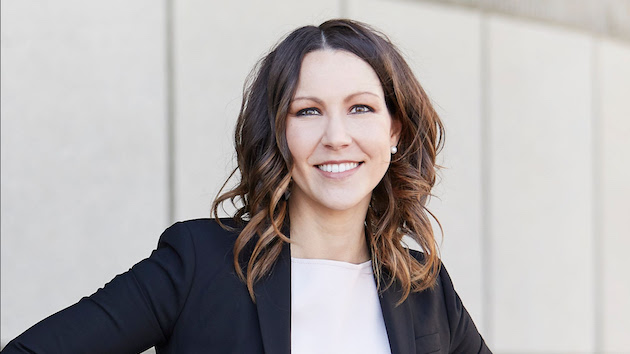
A recent Facebook meme from Dem-land goes like this: “I need Fiona Hill, Elizabeth Warren, Kamala Harris, Rachel Maddow, and Stacey Abrams ... to just be in charge of everything so we can all go about our lives and stop watching stupid, greedy men F everything up.”
You could add from popular culture, Rey Skywalker, the 20-year-old, sabre-buckling heroine in the new Stars Wars film. She’s not easily put off by evil old white guys, including her nemesis, the Emperor Palpatine. In the film’s climax, he dismisses Rey as a “scavenger girl” after she refuses his terms to be queen of the galaxy
Outside the story, as a point of cultural relevance, the term suggests the tone of criticism against those other more controversial, more complicated power women, the new scavenger girls, the likes of Katie Hill, Lisa Page, and of course, Greta Thunberg. All piñatas for people (mainly male) upset by their unabashed advocacy. You could argue that the story about gender power lately is less about women still having to role-play and more about men genuinely terrified of losing their authority.
In the classical-music world, tradition is strong, and few want to rock the boat. Inequities are ingrained. Female music directors of orchestras and opera companies are still rare. On the other side of the curtain, in orchestra administration, the situation is much better: Since 2010, according to a 2016 report by the League of American Orchestra, there have consistently been more top female than male executives — directors, CEOs, and presidents. The percentage of female top executives has ranged between 50.4 and 55.1 percent. Orchestra board members are roughly 58 percent men, 42 percent women.
A New Talent Pipeline for Administrators
Aubrey Bergauer is one who has broken through the clef ceiling of the classical music world, no less from the stodgy, fearful world of regional orchestras. She’s the 36-year-old, C-suite “activator” who brought the California Symphony from near oblivion to fame and fortune, and now has been named founding director of the new Center for Innovative Leadership at the San Francisco Conservatory of Music. The center’s charter is to establish “a talent pipeline for arts administration.” It’s a rare kind of professional school in music academe, exploring old and new models of leadership, and a faculty drawn from all over the economy. Classes begin in January 2021.

Bergauer was the only candidate considered for the position, in large part because she holds a reputation for coming up with great ideas and then realizing them. She is no pipe dreamer, and while she understands the need to forge consensus, she resists speed limits, as well as men who tell her to “tone it down.” She’s learned to say “don’t mess with me” in a nice way.

At the California Symphony, she doubled the audience; doubled the annual number of performances; tripled the audience retention rate against the industry average; cut down a lot of old debt; built up donor households by 180 percent; and brought in a $1 million endowment gift. That’s the largest in the symphony’s history. Bergauer is both persuasive and relentless.
She’s also patron-centric and data-driven and takes great pride in that. She’ll often begin a thought with, “research says ...” Or, “we need to do the cognitive work.” But above all, she believes in the idea of being “customer-obsessed.” For example, one of her convictions is that it’s the customer who decides what’s relevant in programming and all other aspects of the concert experience. “That’s important for us to know,” she said in a recent interview. “We don’t get to say, ‘Because we’ve been good for hundreds of years, we are good and relevant today.’ We don’t get to decide that. The customer decides that.”
Bergauer is drawn to the work of various marketing and branding firms outside of the nonprofit world of classical music. One firm she relies on is a San Francisco company called Profit, which publishes an annual “brand relevance index,” based on a ranking system that determines the most relevant brands; the likes of Apple, Netflix, Amazon, Pixar, and Disney.
“When you get into their methodology,“ says Bergauer, “the number-one indicator of the most relevant brands are those that are ‘customer-obsessed.’ Far and away. And so, it just goes right back to this idea that it’s the people we’re serving, they’re at the center of our work, and the brands who get that right are the ones that are irreplaceable in our lives.”
The Audience Journey
Bergauer has become an authority on marketing tools such as “the audience journey.” This is an idea derived from the “hero’s journey” popularized by Joseph Campbell in the 1970s and ’80s. Incidentally, his ideas on mythology and the implications of “following your bliss,” were deeply imbedded in the Star Wars saga. As for the audience journey, marketeers use Campbell’s storytelling techniques to hold audience attention. Recently, National Public Radio brought Bergauer in to share her thoughts on the process.

“They were very interested in the work I had done on my ‘long-haul model,’ and the audience journey for patrons at the California Symphony: How we move somebody from their first interaction with our organization all the way through the steps of the journey to becoming a repeat attendee to, eventually, a subscriber and, ultimately, a donor. And they said, ‘We want that for our audience.’
“I think way more needs to change than the product itself, because the product is very good. But how do we have an experience that’s customer focused, so that they are so into what we’re doing that they do the marketing for us. If that happens, that’s a game changer for any organization, not just any arts organization.”
Bergauer’s strategy with metrics is not to measure the size of a database — or the number of solicitation calls and the size of the email list — but rather to measure retention and loyalty: the number of first timers who come back, the new subscriber renewal rate, and the “lifetime value of a patron.”
As she puts it in her writings about the long haul: “Who cares if the database is gigantic if none of those people have any future value to us, especially when all the research shows that converting a customer to a second/repeat visit within 12 months of their first experience makes their lifetime value skyrocket.”
And, she adds, “While the lifetime value of a patron is incredibly difficult to measure with most CRMs [customer retention models], we can measure 3-year value or 5-year value of patrons who’ve gone through the old model vs the new model ... which is very telling. In its very simplest form, we can measure annual patron revenue and associated expenses when the focus is acquisition versus patron revenue and associated expenses when the focus is retention.”
Her analogy for this process is a “flowing pipeline,” but a better analogy might be an escalator , the kind you ride at Macy’s, and at each floor someone steps out, takes you by the hand, and leads you to the next riser.
Now, no matter who you are, whether a first-time attendee, or repeat buyer, or new subscriber, or long-time donor, or anywhere in between, we have a specific plan for you and a specific next step in mind, and everything we do points you toward that one next step and nothing else. Equally important to what we do now is what we don’t do now, that is to say we do not solicit a donation before a patron is a second-year subscriber.”
The Secret of Scarcity
Aubrey Bergauer grew up in Houston. To this day, her father runs an organic composting business, the running of which was always of great interest to his daughter. It is not a musical family, save for her father’s record collection. In middle school, Bergauer wanted to play the saxophone but was told her mouth wasn’t right for it. Try a brass instrument, she was told, and so ended up with the tuba. “Then, once I started playing the instrument, I realized that, ‘Oh, I’m the only girl. And that’s actually kind of cool.’ I took private lessons, so I very quickly got on that track. And then I started understanding how I loved breaking the stereotypes and I loved beating all the boys and I loved being the bass line in the band.”

One of Bergauer’s mottos is “always strive to be more than your own role.” This reflects a growing truth about the arts: There aren’t enough people to do all the jobs so that leaves space for the ambitious to broaden their responsibilities. Persistent shortages show up in marketing, IT, as well as data collection and analysis. She often mentions in her blogs the importance of taking “the subjectivity” out of any problem — including organizational issues around equity.
“This whole conversation about equity, inclusion, race, and diversity, is not just about responding to pressure to diversify. It’s not just about our feet being held to the fire. It is about making a smart business decision. And research shows diverse teams make better decisions and representation matters in terms of considering the full range of options available to us when making decisions.”
Drama-memes
Asked what she was reading these days, Bergauer listed Brené Brown’s book Dare to Lead. Bergauer is particularly encouraged by the old admonition; “We fail the minute we let someone else define success for us.” And ... “in order to have courage one must be vulnerable.”

She’s also reading Harvard Professor Amy Cuddy’s Presence. Bergauer is interested in Cuddy’s TED Talk on “power posing.” “You stand in the superwoman pose for two minutes,” Bergauer explained, “and that releases testosterone and endorphins; it makes you feel more confident. The idea is that it’s not just about power posing; there are a lot of things that we can do to position us to be our best selves in that moment and really bring our full selves to the work we’re doing and to be present.”
The great challenge for Bergauer — and perhaps one reason to explore the eccentric notion of power posing — is to persuade people of the urgent need for a new narrative: “We know audiences are declining, more revenue is coming from single tickets than subscriptions. That means our audiences are less loyal. We’ve got to change that.”
But of course, change is “hard, difficult, and scary.” Interestingly, the pushback to her agenda seems to come from people less opposed to her ideas than her style. “I’m not going to name names,” she said, “but, yeah, it’s been said to me before, by a prominent leader in this business, ‘Aubrey, you need to tone it down.’ And I just remember thinking, ‘Why?’ What’s interesting to me is that I have tried not to say to people they have to do it my way. I have tried to write about what’s worked and put it out there as a resource and information that’s available.”
In addition to being told to tone it down, Bergauer has also been told that if she’s the “real thing,” she needs to prove it again and again. As one media observer put it, “It’s not enough that she took a half-dead local symphony that many males with middling talent wouldn’t have deigned to touch and made a genuine success of it.”

“Actually, I have been told, ‘Aubrey, you need to prove that you can be successful again somewhere else.’ Well, in my last three jobs, I’ve had off-the-charts success. But okay. Keep proving it? All right. I’m not going to change. So fine, we’ll just keep doing good work.”
When told she needs to prove herself still again, Bergauer is always careful not to be defensive and not to lose faith in her colleagues. “The reality is that strong, white males have rarely, if ever, had to challenge the way they thought about something. So, it’s not that they’re bad, it’s just that it’s different and that’s work, and that’s hard sometimes.”
As much as she’s adapted to the medium, success for Bergauer is inevitably fraught. She is the real life ‘scavenger girl,’ seen last summer at an Adobe Magento conference, coming onstage with a broken left leg, first on crutches, then handing them off, standing defiantly, then heroically, arms spread, going into her spiel about doing business with a quicksand audience, and about the nature of the “availability heuristic.” It’s all a mix of charm, conviction, authority, and the worry for some people that she may know too much.
As one of her friends wrote in on Facebook, Aubrey Bergauer “is definitely my spirit animal.”




